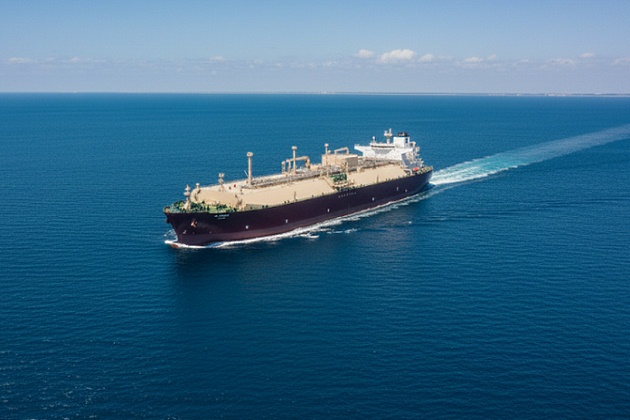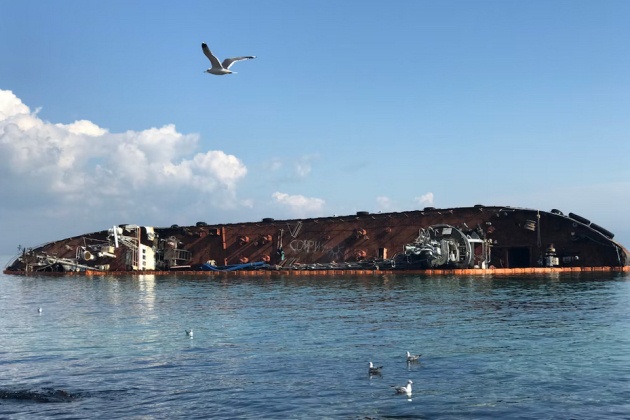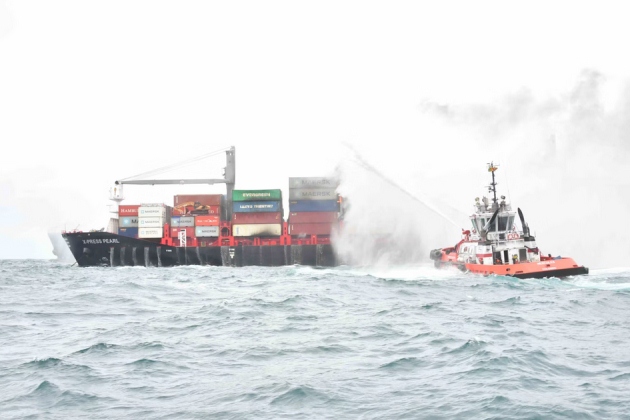Liquefied Natural Gas (LNG) is rapidly emerging as the dominant transition fuel in global shipping, offering significant environmental advantages over traditional heavy fuel oil. However, as the use of LNG for ship refueling (bunkering) continues to scale, a comprehensive understanding of the associated risks becomes absolutely critical. The systematic collection and analysis of LNG Bunkering Incident Reports are paramount to enhancing global safety standards across the entire supply chain. Safety in LNG operations, from source to ship, is the chief concern for all stakeholders.
This article provides a structured, multi-layered analysis of the safety challenges inherent in the LNG supply chain. We will examine the key trends and lessons extracted from these vital incident reports to identify recurring operational risks and establish best practices for prevention.
Introduction
Incident reporting is legally enforced to inform the relevant authorities at international, national and local level about deaths, injuries, occupational diseases, spills and dangerous occurrences. This allows authorities to identify where and how risks arise, and whether they need to be investigated. Incident reporting serves multiple purposes, such as contribution to overall safety improvement by capturing the lessons learnt, continuous improvement of legislation, development of new technology/industry best practices, input to hazards identification (via statistical data), monitoring of environmental impact…
For LNG bunkering activities, only limited experience has been gained from a few years of operation and thus only limited information for LNG bunkering related incidents is available today. One important LNG spillage during truck-to-ship bunkering happened in 2014, where approximately 100 kilograms of LNG leaked from the hose connection in the bunkering room on-board a passenger ship. In different media, this was referred to as a “wake-up call” for the LNG bunkering sector, having a clean incident record before. Also SIGTTO identified two incidents involving LNG releases while draining and purging of the manifold. However, for LNG bunkering operations, clear and uniform requirements for incident reporting are missing, which makes current information on LNG bunkering incidents very limited.

Source: AI generated image
Traditional marine fuel oil bunkering is mainly ship to ship bunkering, hence investigation of accidents is covered by Directive 2009/18/EC establishing the fundamental principles governing the investigation of accidents in the maritime sector. LNG as shipping fuel will involve other bunkering modes (i. e. terminal to ship and truck to ship), with a clear link with the shore side, where incident reporting requirements are partially in place via Seveso directive (if applicable), ADR requirements and specific port requirements.
Read also: The Role of LNG Bunkering Infrastructure
This chapter gives an overview of the existing incident reporting requirements for LNG as fuel related activities at the shore side and water side (including shore/water interface), both for seagoing and inland waterway vessels, at an international, European and Member State level.
Shore Side
Onshore LNG installations
Seveso Directive
Land based small scale LNG installations (LNG fuel stations and small scale terminals) with storage above 50 tons of LNG – and thus the majority of small scale LNG installations – are subjected to the Seveso directive (2012/18/EU repealing Directive 96/82/EC). For the establishments in scope of this directive, two means of accidents reporting are in place (reporting by operators to competent authorities and the latter to the Commission).
Operators shall ensure that competent authorities are informed following a major accident “Major accident” means an occurrence such as a major emission, fire, or explosion resulting from uncontrolled developments in the course of the operation of an establishment, and leading to serious, danger to human health or the environment, immediate or delayed, inside or outside the establishment, and involving one or more dangerous substances.x. Operators need to provide as a minimum, following information as soon as it becomes available:
- the circumstances of the accident;
- the dangerous substances involved;
- the data available for assessing the effects of the accident on man and the environment and the emergency measures taken.
Additionally they need to inform competent authorities on the steps envisaged to alleviate the medium- and long-term effects of the accident and to prevent any recurrence of such an accident. Information is collected at Member State level by Competent Authorities.
Secondly, Member States need to formally report major accidents to the Commission according to Article 18 of the Seveso III Directive if the quantitative criteria of Annex VI are met. The quantitative criteria are specified for serious injury to persons, damage to environment, damage to property or cross border damage. Accidents or “near misses” which Member States regard as being of particular technical interest for preventing major accidents and limiting their consequences and which do not meet the quantitative criteria above should also be notified to the Commission.

Source: AI generated image
This information from major accidents (meeting the criteria of Annex VI) is captured within a European database, i. e. the Major Accident Reporting System (eMARS, see “The Major Accident Reporting System (eMARS)”).
The transport of LNG and LNG loading/unloading/bunkering activities outside Seveso establishments (such as truck to ship bunkering) are, in principle, not in scope of the Seveso Directive and thus do not have to be reported via eMARS.
Summarized, reporting to competent authorities is in place for LNG “major accidents” (typically involving higher amounts of LNG). However, it is expected that the bulk of LNG leaks occurring during LNG bunkering activities will not be covered by the definition of major accident and thus clear incident reporting requirements for those incidents are missing. If criteria of Annex VI are met reporting by Member States to the commission is requested. For those incident types reporting structure is well established.
Worth to mention is that all high tier Seveso establishments (< 200 tons of LNG) should have a safety management system in place which includes procedures for reporting major accidents and near misses, including their investigation and follow-up based on lessons learnt.
The Major Accident Reporting System (eMARS)
The Major Accident Reporting System (MARS and later renamed eMARS) was first established by the EU’s Seveso Directive 82/501/EEC in 1982 and has remained in place with subsequent revisions to the Seveso Directive in effect today. The purpose of the eMARS is to facilitate the exchange of lessons learned from accidents and near misses involving dangerous substances in order to improve chemical accident prevention and mitigation of potential consequences.
eMARS contains reports of chemical accidents and near misses provided to the Major Accident and Hazards Bureau (MAHB) of the European Commission’s Joint Research Centre from EU, OECD and UNECE countries. Reporting an event into eMARS is compulsory for EU Member States when a Seveso establishment is involved and the event meets the criteria of a “major accident”, as defined in Annex VI of the Seveso III Directive (explained in “Seveso Directive”). For non-EU OECD and UNECE countries reporting accidents to the eMARS database is voluntary. The information of the reported event is entered into eMARS directly by the official reporting authority of the country in which the accident occurred.
The eMARS database is freely accessible. A search on LNG incidents in this database results in 4 major accidents, one accident took place at a peak shaving station, one at a liquefaction plant and two others were related to power supply and distribution. No LNG bunkering related incidents were found in this database.
LNG cargo transport via land
ADR, which regulates the transport of dangerous goods via road and railways and thus also covers LNG cargo transport via trucks, gives requirements for notification/reporting of incidents in § 1.8.5, “Notifications of occurrences involving dangerous goods” of the ADR.
This paragraph mentions:
1.8.5.1 If a serious accident or incident takes place during loading, filling, carriage or unloading of dangerous goods on the territory of a Contracting Party, the loader, filler, carrier or consignee, respectively, shall ascertain that a report conforming to the model prescribed in 1.8.5.4 is made to the competent authority of the Contracting Party concerned at the latest one month after the occurrence…
The ADR model report requires the following information to be completed after an incident:
- Information on carrier;
- transport mode (rail/road);
- date & location of occurrence;
- topography (gradient/tunnel/bridge/…);
- particular weather conditions;
- description of occurrence;
- dangerous goods involved;
- cause of occurrence and consequences of occurrence.
If necessary, the Contracting Party has to make a report to the UNECE to inform other contracting parties.
Since incidents during loading and unloading of dangerous goods are in scope according to § 1.8.5.1 of ADR, it can be assumed that LNG bunkering from trucks resorts under this definition.
LNG incidents have to be reported if more than 50 kg of LNG is released or if there was an imminent risk The imminent risk of loss of product is defined as “if, owing to structural damage, the means of containment is no longer suitable for further carriage or if, for any other reason, a sufficient level of safety is no longer ensured (e. g. owing to distortion of tanks or containers, overturning of a tank or fire in the immediate vicinity)”.x of loss of product, if personal injury, material or environmental damage occurred, or if the authorities were involved.
Reported incidents are collected at National level, currently no European database exists for road accidents and incidents, contrary to railway. Recently some Member States (a. o. UK, France, the Netherlands, Belgium) have joined forces on a voluntary basis to develop a common database with incident reports (this database will include accidents and incidents by road, railway and inland shipping).
This initiative is in a pilot phase and it is yet unclear what the final outcome will be and if these data will be publically available.
Water Side
International level
IMO Requirements
The International Standards and Recommended Practices for a Safety Investigation into a Marine Casualty or Marine Incident (Casualty Investigation Code) is adopted via resolution MSC.255(84) and became mandatory under SOLAS in 2010. Chapter 14 Marine Safety Investigation Reports requires that a marine safety investigation is conducted for every “very serious marine casualty”, defined as a marine casualty involving the total loss of the ship or a death or severe damage to the environment.

Source: Unsplash.com
Furthermore, these reports have to be made available to the public and the shipping industry. The Code also recommends an investigation into other marine casualties and incidents, by the flag State of a ship involved, if it is considered likely that it would provide information that could be used to prevent future accidents.
Furthermore, in MSC-MEPC.3/circ. 4, IMO gives harmonized reporting procedures. This circular contains an overview of the data to be submitted into the IMO Global Integrated Shipping Information System (GISIS) – the “Marine Casualties and Incidents” module of the GISIS database collects data on marine casualties and incidents.
It will be interesting: LNG Regulatory Framework International and European Maritime Safety Overview
Since 17 June 2011, EU Member States have been uploading marine casualty data to the European Marine Casualty Information Platform, EMCIP (see 11.3.2.1), to improve data collection and analysis. At the same time, at international level, countries are required to send accident investigation data and reports to the IMO’s Global Integrated Shipping Information System, GISIS. To avoid the duplication of work entailed in reporting casualty data to two different systems, Member States proposed the development of a mechanism to enable the mandatory accident investigation data required by GISIS to be transferred to the IMO by EMCIP. This mechanism was developed at EMSA and, since April 2014, data has been transferred automatically from EMCIP to GISIS. EU Member States are now able to report to GISIS using EMCIP, without any additional workload.
European level
Seagoing vessels
European Marine Casualty Information Platform – EMCIP
Directive 2009/18/EC, establishing the fundamental principles governing the investigation of accidents in the maritime transport sector, requires member states to ensure safety-focused investigation systems, to investigate very serious marine casualties and decide on the investigation of others, as well as to send commonly structured investigation reports and to populate the European Marine Casualty Information Database (EMCIP). This means that data on marine casualties and incidents have to be stored in the European electronic database EMCIP.
EMCIP is a European electronic database for the storage, exchange and analysis of data on marine casualties and incidents. The investigative bodies of the Member States have to notify the Commission about marine casualties and incidents, and also have to provide the Commission with data resulting from safety investigations in accordance with the EMCIP database scheme.
EMCIP provides the means to store data and information related to marine casualties involving all types of ships and occupational accidents. It also enables the production of statistics and analysis of the technical, human, environmental and organizational factors involved in accidents at sea.

Source: Unsplash.com
The database taxonomy has been developed by EMSA in consultation with the Member States, on the basis of European research and international recommended practice and procedures. Within the scope of Directive 2009/18/EC, from 17 June 2011, EMCIP notification by Member States of information on marine casualties and incidents and data resulting from safety investigations is mandatory. This allows the Agency to assist the Commission and Member States with initial analysis of such data, the development of trend monitoring mechanisms, proposals for safety recommendations, the improvement of existing European legislation and promotion of new technical requirements.
The EMCIP database is populated by the national competent authorities of the Member States acting as data providers. EMSA manages the system and accepts the communicated data before they are finally stored.
LNG bunkering accidents and incidents (truck to ship, terminal to ship and ship to ship) are covered by this Directive. If a ship is involved, then it is possible to report, but pure shore operations are not in scope. Currently the EMCIP structure and taxonomy has been updated to allow for adequate reporting on accident related to LNG as shipping fuel. It relates to taxonomy on propulsion types (BOG steam, BOG diesel electric, NOG dual fuel, dual fuel), LNG bunkering (ship to ship, truck to ship and terminal (shore) to ship). This update allows registering all water and water/shore interface related incidents.
Inland waterway vessels
Requirements for incident reporting for inland waterway vessels are described in ADN, section 1.8.5.1 – Notifications of occurrences involving dangerous goods. Similar to ADR, ADN requires the reporting of incidents if a certain amount of dangerous goods were released during loading, filling carriage or unloading of dangerous goods or if there was an imminent risk of loss of product, if personal injury, material or environmental damage occurred, or if the authorities were involved. This means that from a certain amount (i. e. ≥ 50 kg), LNG spills during LNG bunkering have to be reported.
Read also: LNG Bunkering Guide – What It Is and How to Use It
ADN provides a model for report on occurrences during the carriage of dangerous goods, which is very similar to the ADR report model for transport via road/rail.
National level
In some countries, national incident reporting requirements exist for the reporting of maritime accidents in general, applicable for seagoing vessels, inland waterway vessels, or both. Some examples are:
- Directive for registration of maritime accidents by the nautical administrator (Richtlijn voor registratie van scheepsongevallen door de nautische beheerder (SOS formulier), The Netherlands.
- Act to Prevent Against Accidents on the North Sea (Wet bestrijding ongevallen Noordzee – Artikel 4 Meldplicht).
The requirements can apply to the whole country, a specific region or a specific waterway. The key data collected by these procedures are more or less the same as the databases discussed above (e. g. vessel, location, damage) however the way of detailing and the way of reporting strongly varies and thus a uniform way to collect incident data is lacking.
Port level
For incidents occurring within a port area, port specific incident reporting procedures exists for incidents involving dangerous goods. These incident reporting requirements are mostly part of the “Dangerous Goods Codices” of the ports. Similar as with the incident reporting on a national level, the level of details required according these port specific incident reporting procedures and the way of reporting differs between the ports.

